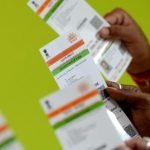
Around a quarter of a century ago, automated teller machines (ATMs) were not known to most folks in India. I was overseeing the inauguration of an ATM in a branch of the bank that I worked for. There were many people crowding around the machine to see the novelty called ‘ATM’.
The branch staff kept demonstrating transactions to curious customers. One man kept coming back for more such demos. Multiple demos and hours later, he was still hanging around the ATM. I asked him whether he wanted to see another demo. He shook his head and said he was only waiting to see from where the person sitting inside the ATM will come out. He refused to believe there was no one sitting inside the ATM.
We all now know the ATM is an electro-mechanical device, with a switch that knows how much cash is available in an ATM and in what denomination. In a cash withdrawal transaction, once your PIN is verified and there is sufficient balance in your account, the switch sends an instruction to the ATM to dispense the amount requested. You would be receiving a mix of Rs2,000, Rs500, Rs100 and sometimes even Rs200 from ATMs nowadays.
Have you ever wondered how the ATMs know which denomination of notes to dispense and how many of each denomination? Most of the switches follow the principle of ‘last note to be dispensed in the lowest denomination available in the ATM’ at the time of withdrawal’. For example, if you want to withdraw Rs1,000 from an ATM and the ATM has Rs500 and Rs100 denomination available, it will dispense one note of Rs500 and five notes of Rs100. If instead of Rs500 and Rs100, it has Rs200 and Rs100, the ATM will dispense four notes of Rs.200 and two notes of Rs100.
If the ATM has three denominations, say Rs500, Rs200 and Rs100 at the time of withdrawal, it will dispense one note of Rs500, two notes of Rs200 and one note of Rs100.
The currency notes inside the ATM are stacked in boxes called ‘cassettes’. Each cassette is loaded with one denomination. Most of the ATMs in the country have four such cassettes, while some of the older ATMs may have two cassettes. To enable the ATM to understand what denomination is available and in which cassette, the cassettes need ‘calibration’, based on the length, breadth, thickness of the notes they are supposed to hold. This is done by trained technicians either at the ATM factory or at the ATM site.
The cassettes in the ATM are loaded with currency notes on a regular basis by the bank staff or their authorized agencies. Banks are mandated to issue clean and crisp (ATM-fit) notes and ensure the notes are genuine. The cash is carried from the currency vaults of banks to the ATMs, in security vans with armed escorts.
The amount of cash that is loaded in the ATM depends on various factors such as average number of transactions on the ATM in the past, average value of withdrawal, beginning of the month (salary period), festivals, long weekends, distance of the ATM from the cash vault etc.
When you withdraw cash from an ATM, you may hear a lot of noise emanating from inside the machine. This is the noise generated when the dispenser arm of the ATM picks out the number of notes required from the cassettes. The notes are picked up one by one from the cassette and put on the dispenser belts which move and take the notes up to the dispensing outlet of the ATM.
While ATMs dispense cash accurately, in the rarest of rare cases, there could be an error owing to which all notes may not get dispensed to you. Although it may seem an overkill, it is advisable to count the cash received from an ATM. Take care to do it quickly else the customer standing behind you may get irate.
[“Source-livemint”]




